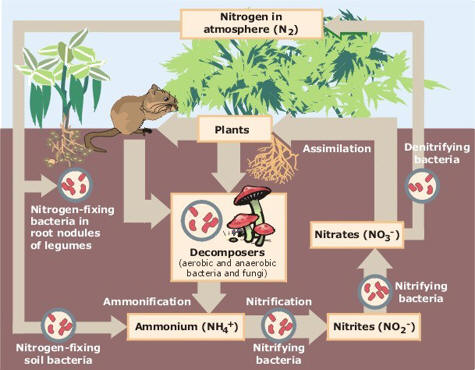2.5.1: Nitrogen Cycle
- Page ID
- 15848
Nitrogen comprises 78.08% of the atmosphere making it the largest constituent of the gaseous envelope that surrounds the Earth. Nitrogen is important in the make up of organic molecules like proteins. Unfortunately, nitrogen is inaccessible to most living organisms. Nitrogen must be “fixed” by soil bacteria living in association with the roots of particular plant like legumes, clover, alfalfa, soybeans, peas, peanuts, and beans. Living on nodules around the roots of legumes, the bacteria chemically combine nitrogen in the air to form nitrates (NO3) and ammonia (NH3) making it available to plants. Organisms that feed on the plants ingest the nitrogen and release it in organic wastes. Denitrifying bacteria frees the nitrogen from the wastes returning it to the atmosphere.



